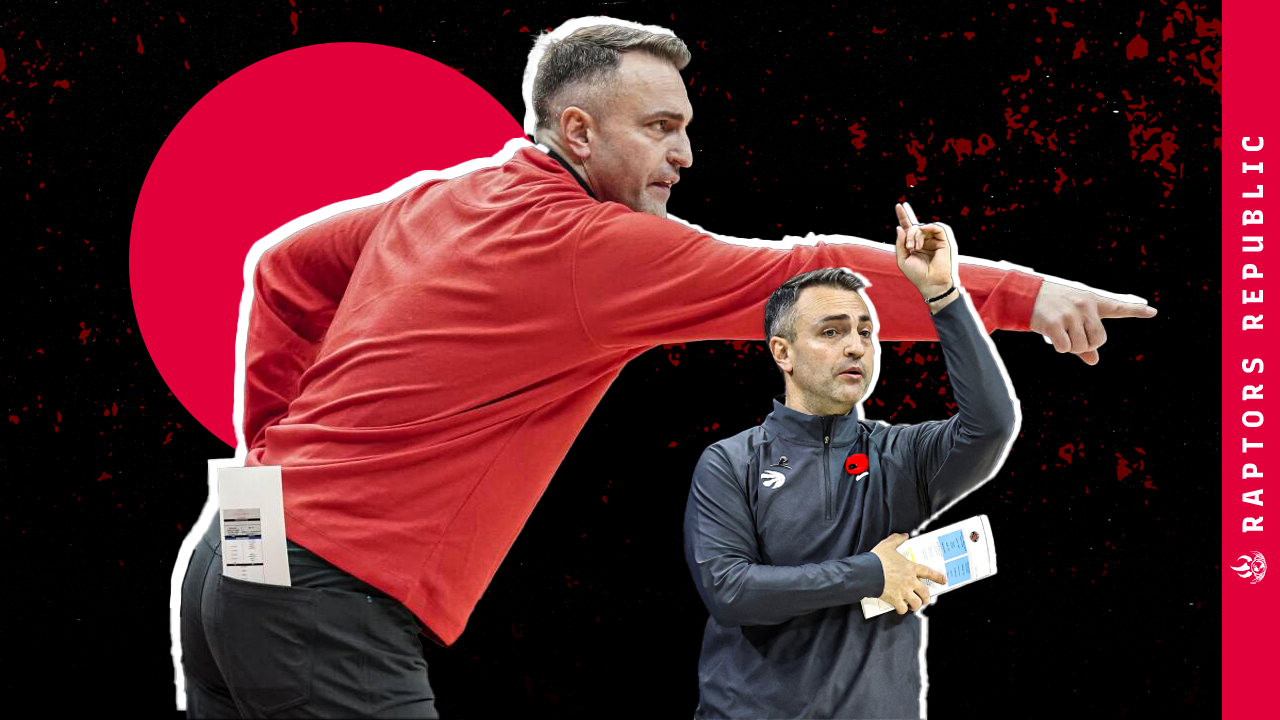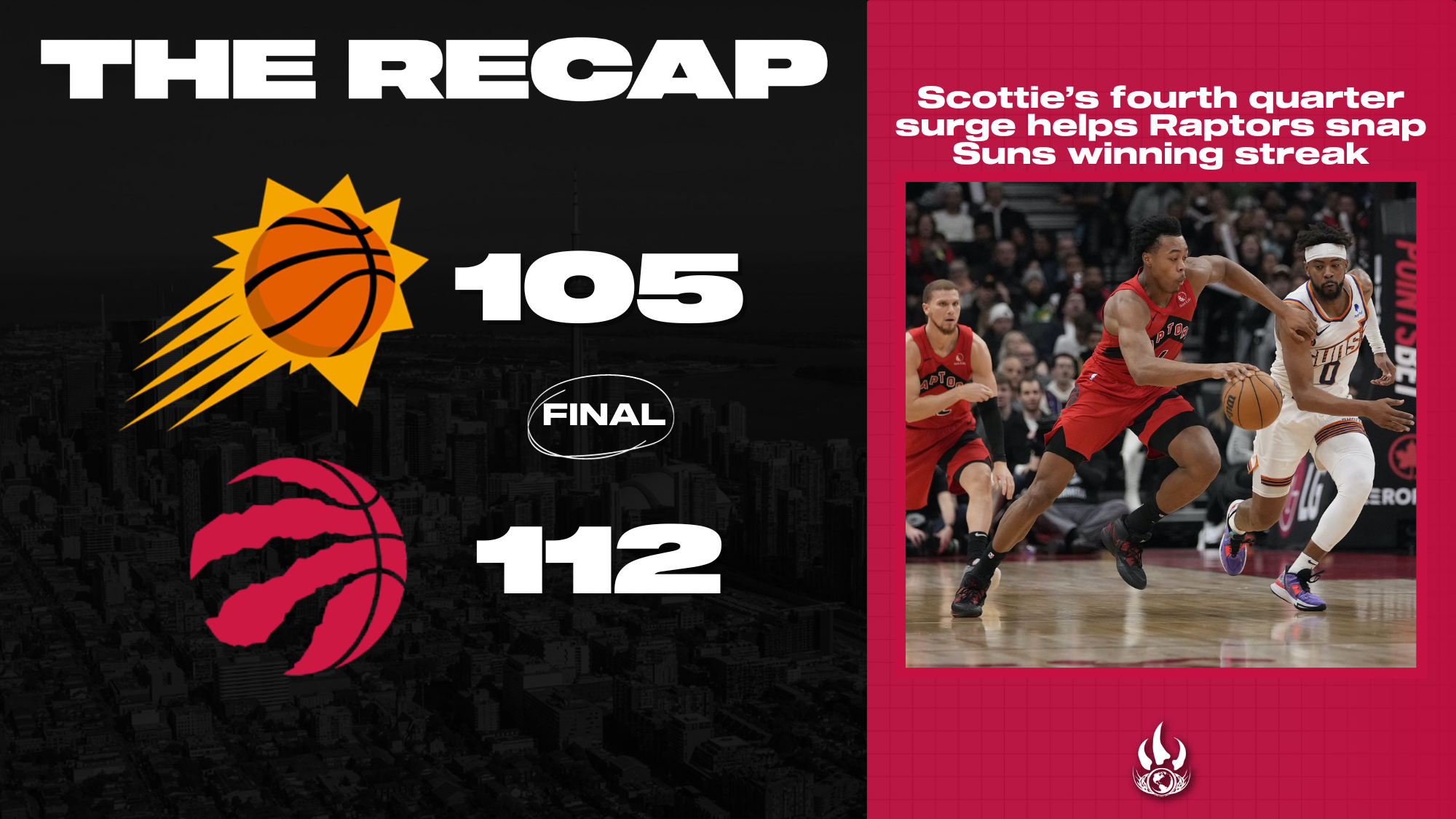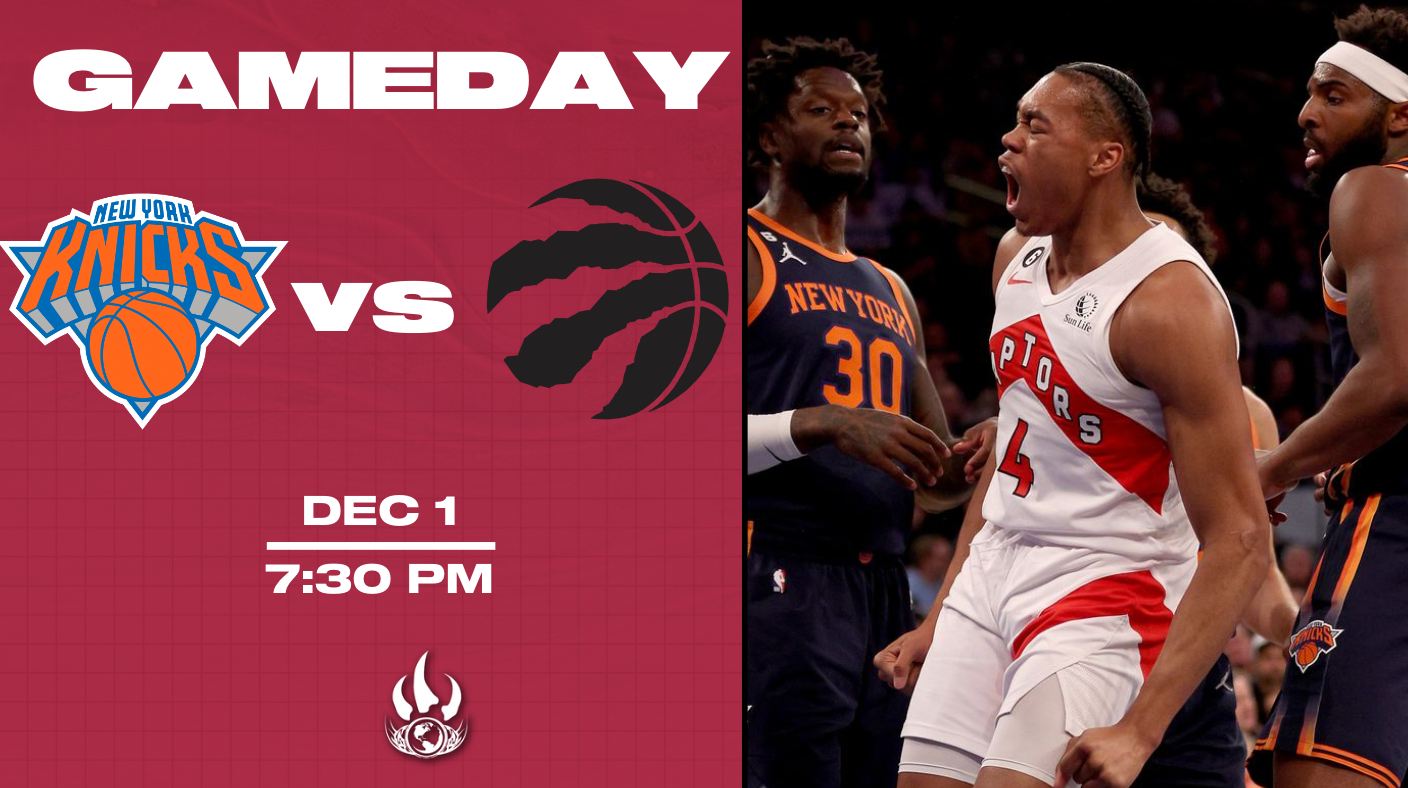To the French, all must have seemed lost in February of 1916. The Germans started shelling French lines in Verdun, hoping to knock the French out of the First World War (or, the Second Franco-Prussian War). The French were almost completely unprepared, having exhausted their forces in the counter-attacks of the year prior. Many of their biggest defensive guns in forts behind the lines weren’t loaded. Then after initial bombardments came almost 100 flamethrowers. The Germans took ground quickly.
But their goal was to tempt counterattack against artillery positions, and the butchery would force the French to sue for peace. Initially, it worked. Not the diplomatic goals. But the destructive ones. The war was perhaps the nadir of the war from the Allies’ perspective. There were no tactical objectives, so what was the point?
The Toronto Raptors had their nadir very early on this season. The 2022-23 season saw Toronto play some of its worst offense in decades, relative to the league, as the Raptors finished 25th in first-chance halfcourt efficiency. And yet early on in 2023-24, the Raptors would have begged to have that efficiency back. They averaged 94.5 points per 100 first-chance halfcourt plays in 2022-23, and to start 2023-24, three of Toronto’s first four games failed to crack 75 points per 100 first-chance halfcourt play. What was the point would have been a fair question in reference to Toronto’s offense. Toronto didn’t know how low it could sink. Until, suddenly, it stopped sinking.
The French eventually reversed the battle of Verdun, held on, and turned the German position into the same miserable attrition as they themselves faced. So too have the Raptors.
But in many ways, the Raptors aren’t just turning things around. They might secretly uprooted the foundations of those leaky early games and actually built an enviable offense. Darko Rajakovic’s vision is finally being implemented, albeit with some concessions to his actual roster. The results certainly aren’t burning the league down, but they’re improving. And the process is much better than the results.
It is important not to assign qualitative measurements to simply descriptive numbers. Passes, for example, aren’t always a good thing in the NBA. Sure, it’s good to pass. But you can overpass, and sometimes the best offenses pass little and the worst too much. Last year, for example, the Raptors actually finished eighth in passes made per game, at 292.0. That’s neither good nor bad; they were just below two Finals teams, and just ahead of two teams that accomplished nothing on the season. This year, the Raptors are third in passes per game, throwing 16 more they did last year. Again: that’s descriptive, not qualitative.
But some passes are more valuable than others. For example, north-south passes, either interior or attacking passes into the paint, or kickout passes from the paint to shooters, are higher value than others. And that’s where Toronto’s passing truly shines. Last year, Toronto finished sixth in interior, attacking, or kickout passes, at 58 per game, according to Second Spectrum. This season, Toronto is first by a mile at 73. If you’re doing the math at home, that means almost all the passes Toronto added from last year to this are meaty, advantage-creating ones. The number of high-value passes is staggering; in fact, Toronto is averaging the fifth-most such passes per 100 possessions of any team in a single season since 2013-14, when Second Spectrum’s database begins. Tight-window passes are becoming something of a signature for this team. (For better or for worse.)
Those passes are lifeblood to Toronto’s offense. The Raptors don’t have a ton of players who can reach the rim with the dribble (they are once again a bottom-10 team in efficiency on possessions featuring a drive), so they just do it by passing. And such passes create scoring opportunities, which means assists. Against the Phoenix Suns, Dennis Schroder finished with 12 assists, largely because he’s a master of using his almost unmatched speed to create passes within the tight confines of the paint.
Last year, the Raptors the 24th in assists per game, despite all their passing. This year, they are second. In Schroder (10th for guards), Scottie Barnes (sixth for forwards), and Jakob Poeltl (19th for centers), the Raptors have an assist leader at each of the three positions in the NBA Advanced Stats database. The qualitative means by which Toronto is getting its shots is better. In fact, Toronto’s expected shot quality, which takes into account both location and defender’s location, leads the league this season. The Raps were 11th last year, middle of the pack.
This is all very good. And the results have been significant; the Raptors are so far from how they started the season that are virtually unrecognizable. The Raptors have had an above-average (for the league, not just for themselves) first-shot halfcourt average in six of their last eight games. This is growth, from well below last year to well above it. It’s not always going to be consistent, and it’s going to be two steps back for every three steps forward. But steps forward are the only way … forward.
Toronto has accomplished this progress in many ways. They’ve mixed in much more initiation through the post from Pascal Siakam, where he is miraculous. Scottie Barnes has emerged as a supercomputer in the pick and roll, diagnosing and defeating all sorts of different coverage types. He took over in the fourth quarter to lead Toronto over the Suns. The team has used its cuts as actual threats, running harder, and looking to find cutters rather than simply doing it as a matter of course, particularly in split action. Jakob Poeltl hasn’t missed a shot for a month. There have been lots of micro improvement across the roster as well as tactical adaptation from the coaching side.
But perhaps more significant is how Toronto hasn’t improved. It has not improved from behind the 3-point arc, which is actually a good thing. That means Toronto’s offensive improvement has not been due to a hot streak (and nor was its offensive cratering to start the season due to a cold streak). In fact, if you track a trend line of Toronto’s 3-point shooting efficiency from Game 1 to today, it has a negative slope, meaning the team has gotten (ever so slightly) worse as the season has gone on. No, the improvement in the halfcourt offense has been systemic and substantive, not merely the result of shooting variance.
So how has Toronto created better passes and better shots?
In many ways, with increased movement around the court. Last year, Toronto finished 20th in off-ball screens set per 100 possessions, at 41. This year it’s in 11th with 50 per 100 possessions. The increase of almost 10 screens off ball is coming mainly from the stars, who are buying in and moving without the ball in their hands. Siakam, Barnes, and OG Anunoby have all increased their cuts per 100 possessions by at least 3 per 100 possessions. All three are also setting more off-ball screens, so they’re all benefiting one another while at the same time reaping those benefits.
Siakam cutting around a Barnes off-ball screen has been particularly effective, averaging 1.15 points per chance. Toronto has done well with one or both of them on the elbows. The Iverson Loop set has created some easy lob entry passes for Toronto, as has cross screens with both players on the elbows. Toronto has done a better job this season chaining actions together, moving for example from cross screens to a pick and pop to keep dynamism and movement in sets.
As a result of all the movement, and even without a whole lot of shooting, Toronto is doing a fantastic job of manufacturing closeouts from defenders. It actually faces the sixth-most closeouts per 100 possessions of any offensive team this year, at 57. Last season Toronto was in 18th at 45. That is a monstrous leap, and it’s not just half-hearted closeouts that defenders do to goad a player into shooting. Toronto is facing more full and fly-by closeouts than short, according to Second Spectrum.
The foursome of Anunoby, Gary Trent jr., Gradey Dick, and Otto Porter jr. are all drawing huge numbers of full or fly-by closeouts — far higher rates in the case of Anunoby and Trent. Barnes, too, is drawing far more full closeouts. Because of the movement, Toronto has been able to put defenses in rotation, which has allowed the space for more of those deadly interior, attacking, and kickout passes.
The Raptors are creating great offense, with plenty of ball and man movement, forcing defenses to do more than simply sit in a shell. Now the team needs to get better at turning that good offense into more points on the board.
Shooting would make all of this work better. Toronto is creating relatively good offense despite the friction created by lack of shooting. It’s running modern offense now, which is good, but it still needs to modernize the skill-sets on the roster. It’s not just the mismatch-hunting in the post of last year’s offense, though the addition of that about halfway through this young season was revitalizing. It’s not just the elbow actions, although Toronto is creating better offense out of such sets than it was earlier in the year. It’s not just picks, or handoffs, though Barnes especially is thriving in on-ball looks this year. It’s the amalgamation of the bunch.
There are still issues, and some things have actually contributed to Toronto’s offense arguably punching above its weight. It’s possible that one or all of Schroder, Barnes, Malachi Flynn, Chris Boucher, and/or others are on hot streaks from deep and might regress. Perhaps even more significantly, defenses have somewhat been helping the Raptors. Some teams like the Milwaukee Bucks have inexplicably gone over on-ball screens set for Barnes. Others like the Indiana Pacers have done miserable jobs sending double teams. Most have pressed Jakob Poeltl at the elbow rather than sagging off to disallow his entry passing. Toronto has desperately struggled to score in the half-court on those elbow sets when Poeltl is ignored. Sometimes he has eaten the space and finished with nifty driving layups.
But most of the time in those instances, Toronto has failed to create anything and had to reset for late-clock high pick and rolls or isolations. If teams can force Toronto’s elbow sets into grinding gears and record skips, that would go a long way towards derailing the whole party. My bet is that were this Raptors roster to find itself in the playoffs, the offensive improvements would not survive the clamping, tailored defense that improves throughout a series. Still, those are problems for later. For now, the offense is improving consistently. That matters more than theoretical problems in the future.
The French never quit at Verdun. (That they survived for so long in the acid maw of hell contributed largely to why they folded so quickly the next time the Germans came calling, a few decades later.) What looked lost eventually was won — much, much later. And that’s kind of the point of this Raptors’ team, too. Rajakovic’s offense may be impressive in a vacuum, but it’s almost certainly a better offense for … not this team. The hope is that the team built for this offense will come. Either through internal development or, more likely, through front-office decisions. (Hopefully it won’t take two more years, as it did for the French after Verdun.)
It’s hard to stay in the present. Trades will likely happen, but that’s not the focus for this team at the moment. The Raptors are focused on making this team work on the offensive end, even if some of the principles are meant more for the future. (If that doublespeak seems confusing, it is — Rajakovic’s job this year is hard and multifaceted.) But either way, Rajakovic’s vision looks quite appealing at the moment. At least, it’s clarifying, coming into focus. The Raptors can make it work without shooting. Enjoy that, even if you can’t help but imagine what it would look like with shooting.



